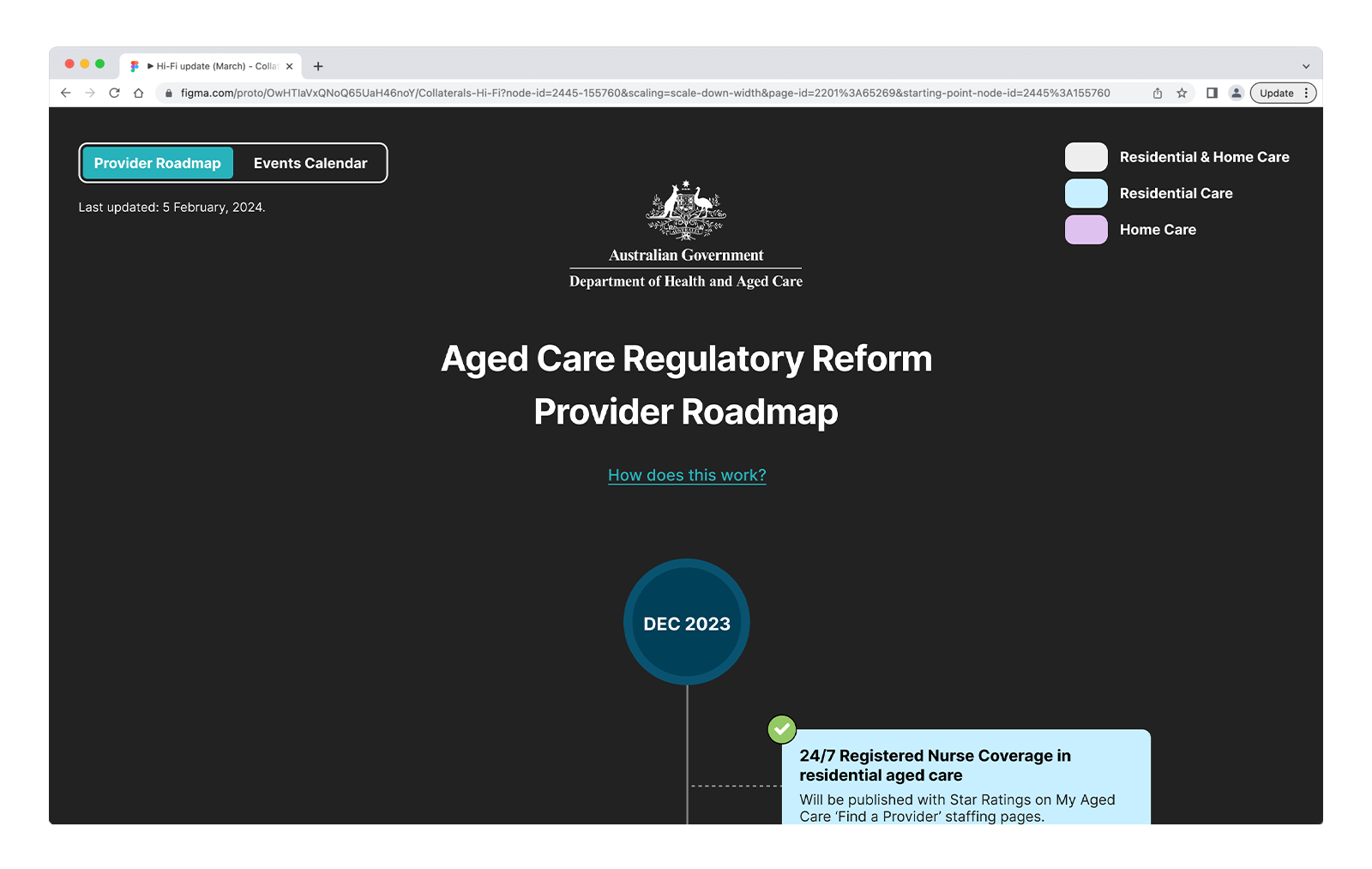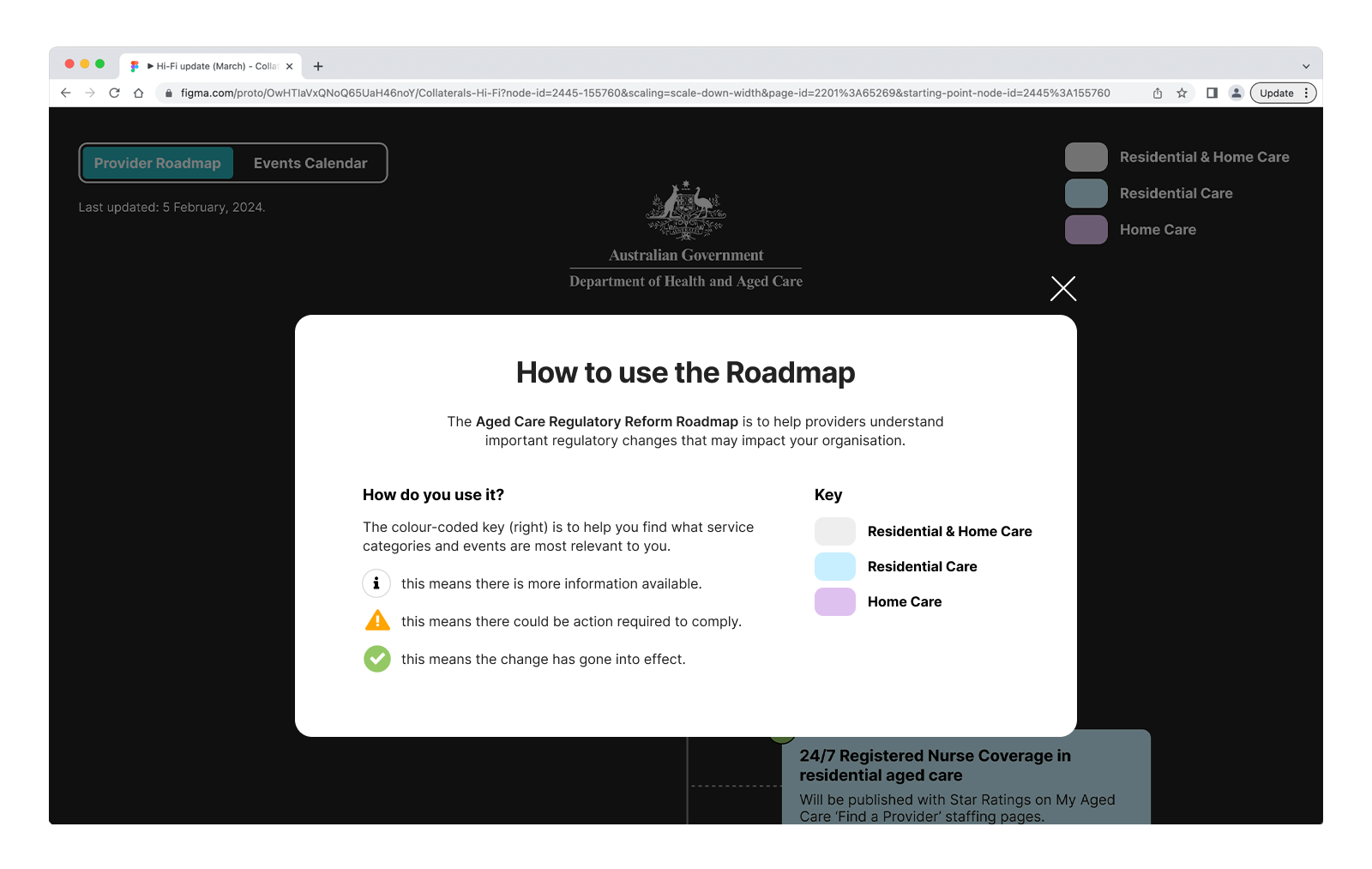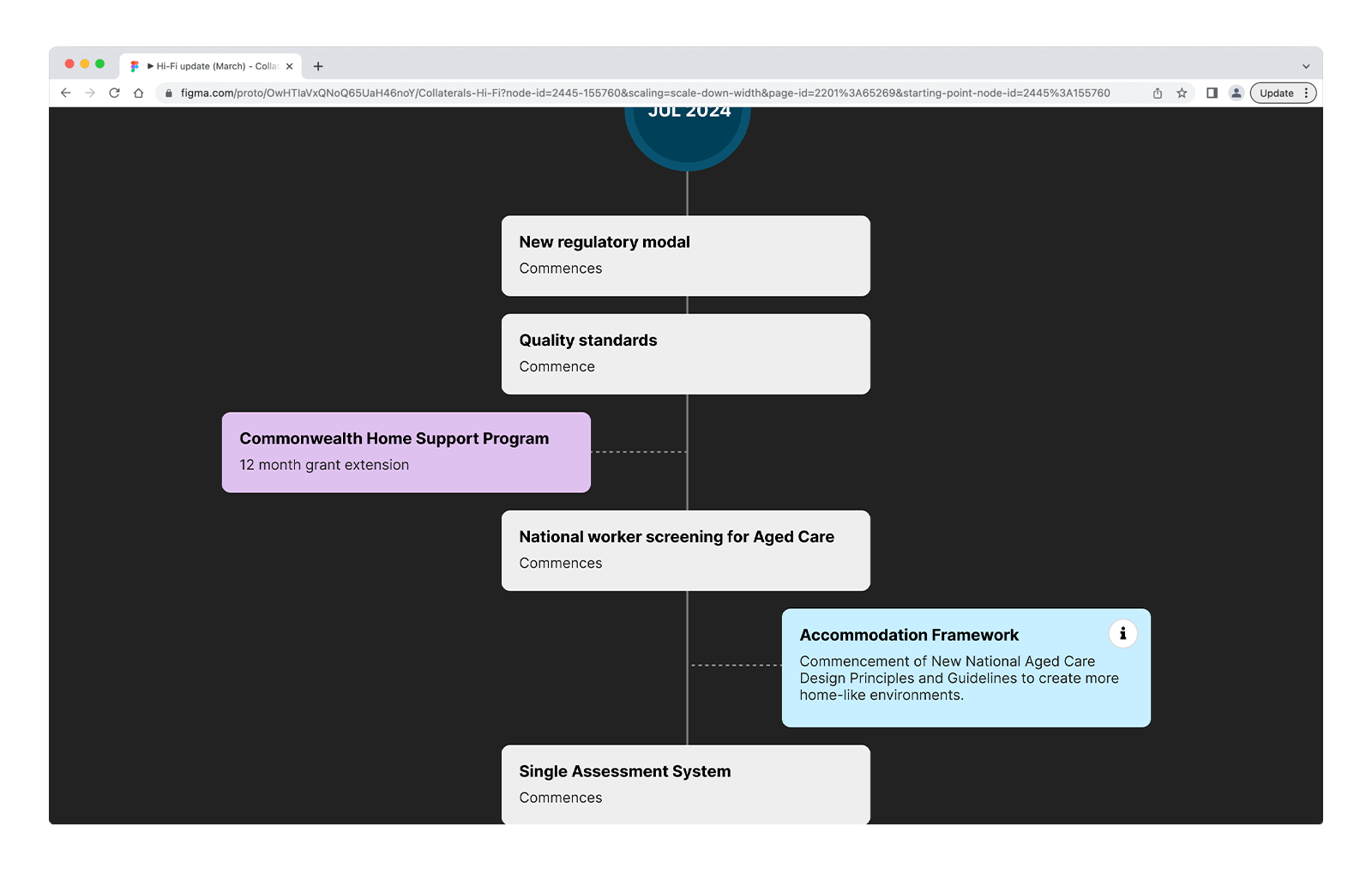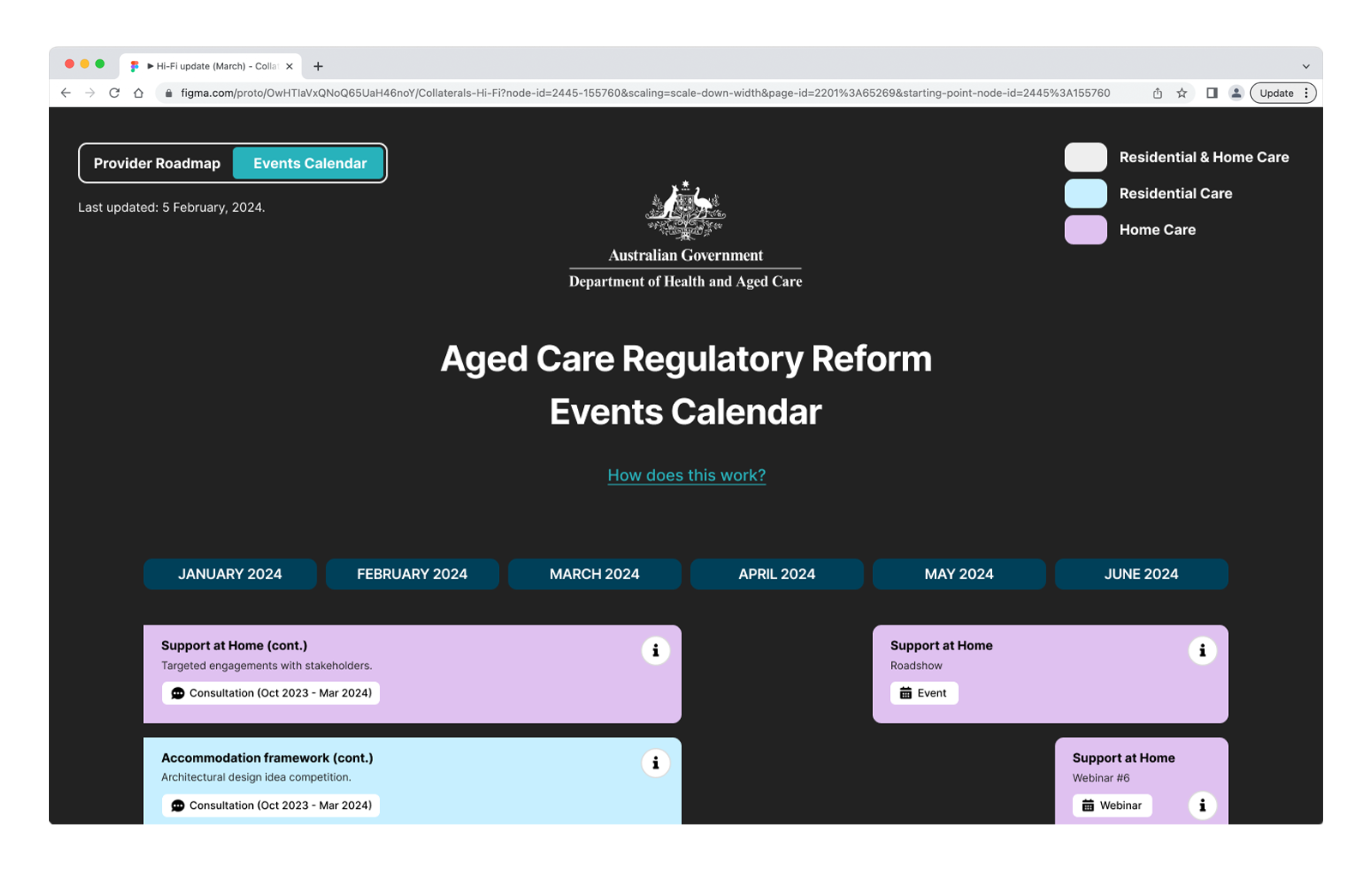
Dept. of Health & Aged Care
Reg. Reform Roadmap
Designing Aged Care Providers a better way to understand new obligations
CX research & design


CX research & design
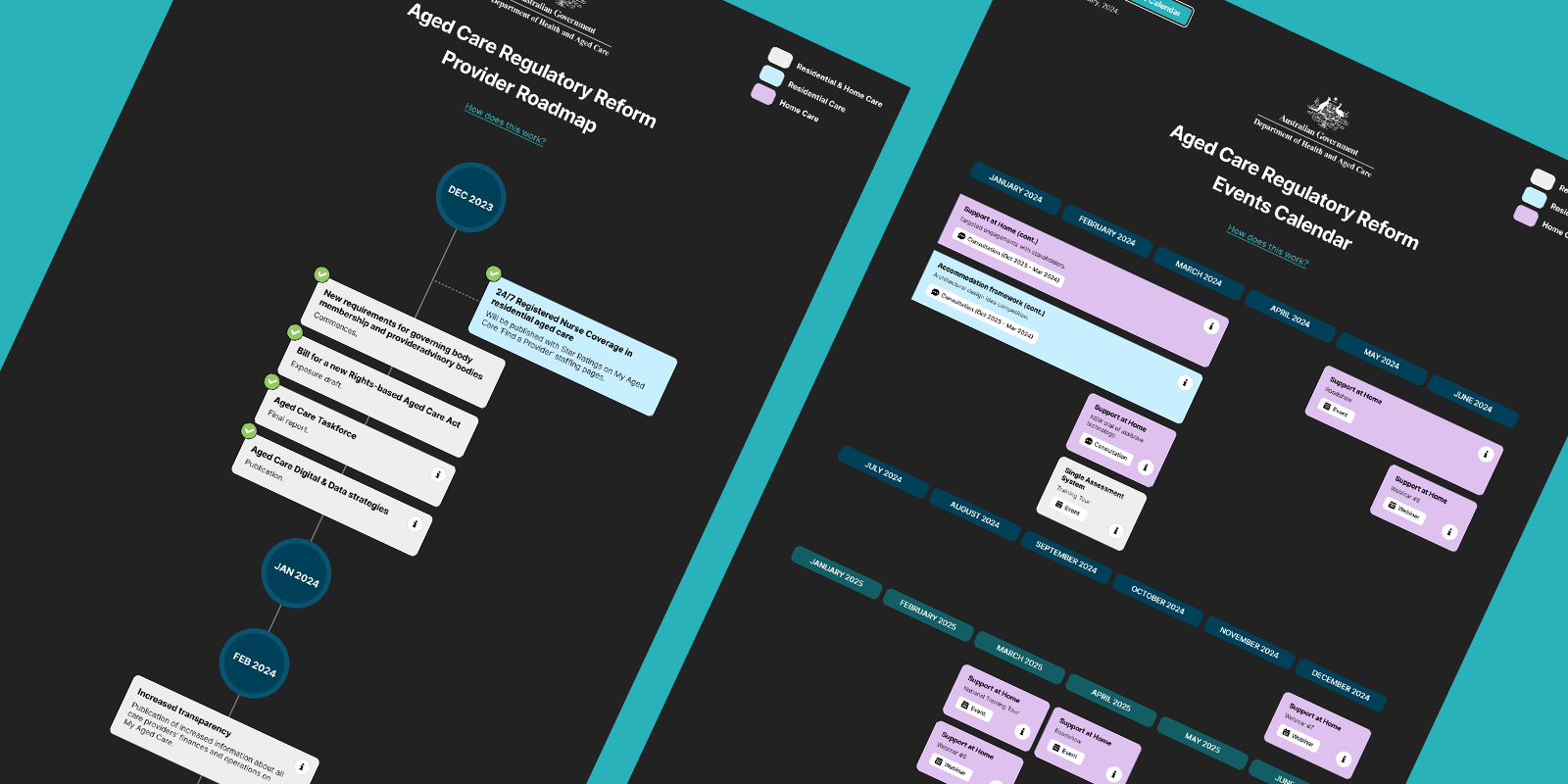
Aged Care Providers are required to maintain compliance measures with the Aged Care Commission while also managing a great deal of change to their compliance activities.
These changes can be complex, overwhelming and are currently being communicated in a way that is jargon-heavy, unaccessible and non-inclusive for many.
Our objective was to gain a deep understanding of the experience of residential and home care providers when interacting with government, including their behaviours, motivations, needs and pain points.
We reviewed 7 consultation papers and conducted 20 contextual interviews with different types of Providers. This helped us discover numerous insights to work from as we further investigated how we might address the problems surfaced.
Opportunties were identified and prototyped before we re-engaged the Providers to concept test our ideas to help drive deeper insight and validation.
Providers & stakeholder interviews
Provider journey mapping
Concept testing

There were 4 high-level insights gathered from our research interviews with providers
We moved forward with validating our assumptions and hyptheses by concept testing some possible outcomes, and to collect deeper feedback and findings.
This was done via medium fidelity prototyping and another round of moderated concept testing sessions. We performed two rounds of sessions, with review and iteration between sessions.
It became very clear what was desirable to Providers.
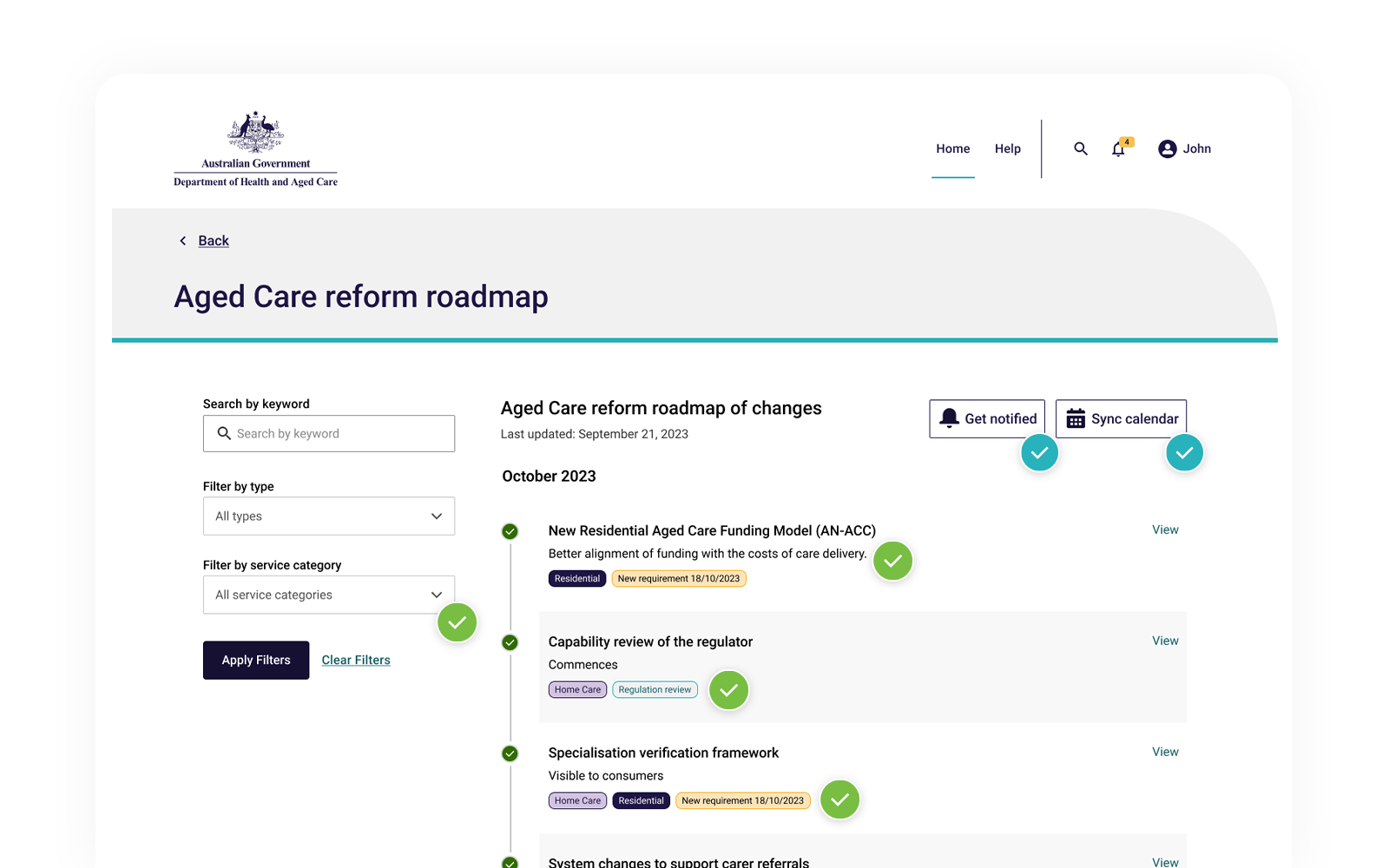
The outcomes of engagement was clearly based around how content is delivered and allowing Providers to feel personally catered to, with how they interact with the content.
To acheive better outcomes for Providers, we recommend employing the following guiding principles:
1. Be focussed on Provider needs
To best understand and maintain compliance, Providers need better access to information that is targeted to their needs and language as providers.
2. Be relevant and actionable
Provders need information and support that is relevant to them and their specific services of care, rather than wade through policy-heavy documentation that is not strcutured toward specific cases.
3. Be clear and concise
Be to the point and concise and visual where possible, and then allow Providers to discover deeper content as they want to.
